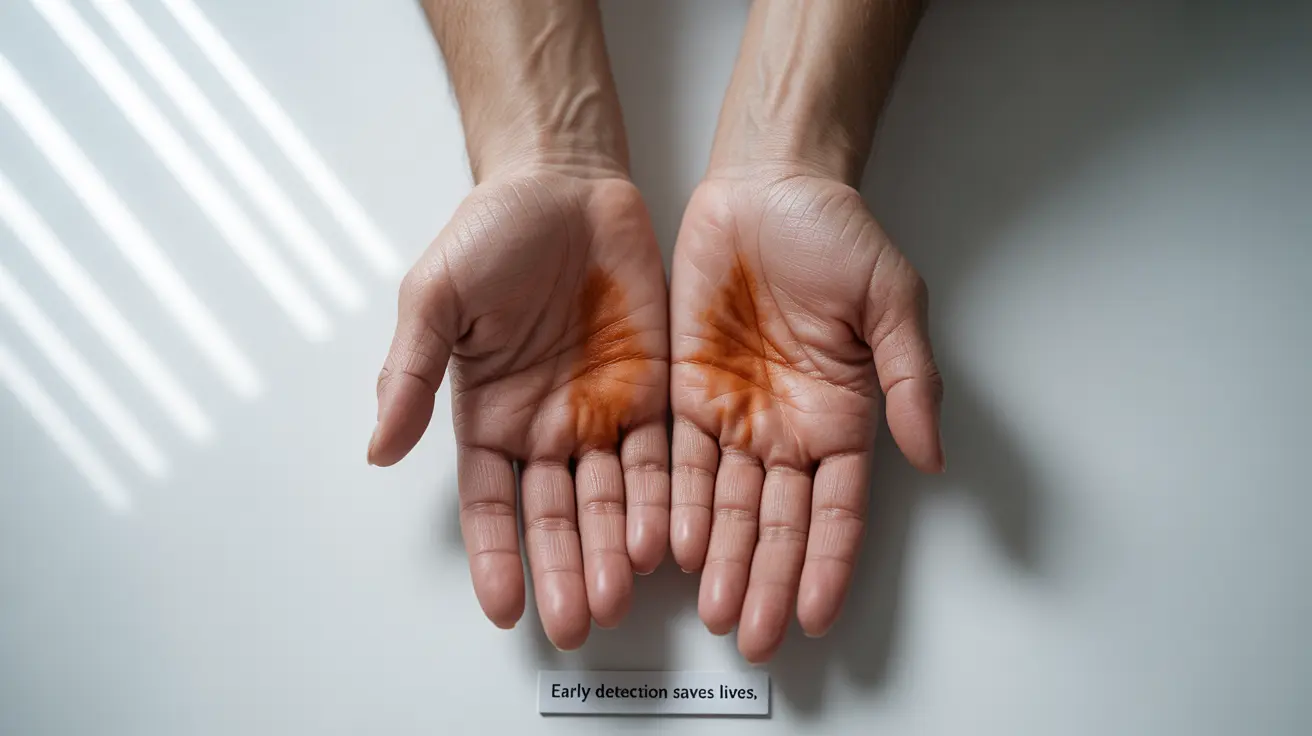Living with hypothyroidism can affect many aspects of your body, including noticeable changes in your hands. From unusual skin discoloration to uncomfortable symptoms, understanding these changes is crucial for early detection and proper management of thyroid conditions. This comprehensive guide explores the connection between hypothyroidism and hand-related symptoms, including the peculiar phenomenon of rust-colored stains that some patients experience.
Common Hand Symptoms in Hypothyroidism
Hypothyroidism can manifest several distinct symptoms in your hands, serving as important indicators of thyroid dysfunction. These changes often develop gradually but can significantly impact daily activities and comfort.
Temperature and Texture Changes
One of the most common symptoms is cold hands, resulting from reduced circulation due to slowed metabolism. The skin may become notably dry, rough, and thick, particularly on the palms. These changes occur because hypothyroidism affects the body's ability to regulate temperature and maintain proper skin moisture levels.
Swelling and Stiffness
Many people with hypothyroidism experience swelling in their hands, known as myxedema. This swelling can make fingers feel stiff and limit range of motion. The condition may also cause joints to feel tender and uncomfortable, especially during movement.
Skin Discoloration and Unusual Stains
A less commonly discussed but concerning symptom is the appearance of rust-colored stains on hands overnight. This discoloration can be alarming for many patients and may indicate various underlying issues related to thyroid function.
Understanding Rust-Colored Stains
The appearance of rust-colored stains on hands can be attributed to several factors related to hypothyroidism, including changes in skin pigmentation and alterations in blood flow. While not all patients experience this symptom, it's important to monitor any unusual skin changes and report them to your healthcare provider.
Nail Changes and Related Symptoms
Hypothyroidism can significantly impact nail health, leading to brittle, splitting, or ridged nails. These changes occur due to decreased metabolism and reduced nutrient absorption, affecting the growth and strength of nail tissue.
Carpal Tunnel Syndrome and Hypothyroidism
There's a notable connection between hypothyroidism and carpal tunnel syndrome. The reduced thyroid function can lead to fluid retention and swelling in the wrist area, compressing the median nerve and causing typical carpal tunnel symptoms like numbness, tingling, and weakness in the hands.
When to Seek Medical Attention
Monitoring hand symptoms is crucial for managing hypothyroidism effectively. Seek immediate medical attention if you notice sudden changes in skin color, severe swelling, or persistent pain. These symptoms might indicate the need for thyroid medication adjustment or additional medical evaluation.
Frequently Asked Questions
- What are the common hand symptoms and skin changes caused by hypothyroidism?
Common symptoms include cold hands, dry and thick skin, swelling, and brittle nails. Patients may also experience changes in skin texture and temperature sensitivity.
- Can hypothyroidism cause rust-colored stains or discoloration on the hands overnight?
Yes, some people with hypothyroidism may develop rust-colored stains on their hands. This discoloration can be related to changes in skin pigmentation and circulation caused by thyroid dysfunction.
- Why do people with hypothyroidism often experience cold, dry, or swollen hands and brittle nails?
These symptoms occur due to decreased metabolism, reduced circulation, and changes in the body's ability to regulate temperature and maintain proper moisture levels. The condition also affects nutrient absorption, leading to nail problems.
- How is carpal tunnel syndrome related to hypothyroidism and what symptoms should I watch for in my hands?
Hypothyroidism can cause fluid retention and swelling that compresses the median nerve in the wrist, leading to carpal tunnel syndrome. Watch for numbness, tingling, weakness, and pain in your hands and fingers.
- When should I see a doctor if I notice unusual stains or sudden color changes on my hands?
Seek medical attention immediately if you notice sudden skin color changes, persistent discoloration, severe swelling, or unusual stains, especially if accompanied by other symptoms. These changes might indicate the need for medication adjustment or further evaluation.




